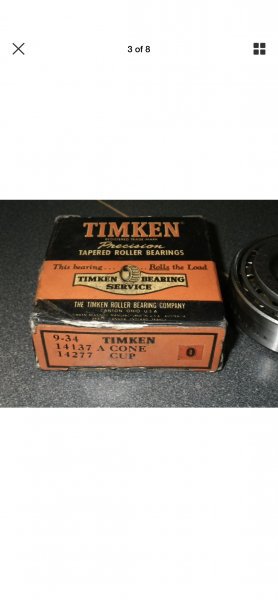- Joined
- Dec 25, 2011
- Messages
- 10,511
The ANSI/ABMA grading system for tapered roller bearings (inch design) in order of increasing precision runs
CLASS 4, 2, 3, 0, 00.
There is now a class 000 but my table dates to 1994 and doesn't show it.
The parameter of most interest on a Clausing or Atlas lathe is probably the Assembled Bearing Radial Runout. In ten-thousandths of an inch (NOT THOUSANDTHS), for tapered roller bearings with cup outside diameters up to 12", the limits are:
20, 15. 3, 1.5, 0.75
How they get around the fact that the bearings may have cup and cone packaged separately isn't explained.. But your Class 0 cone when mated to a class 0 cup should supposedly have a radial runout less than or equal to 0.00015".
CLASS 4, 2, 3, 0, 00.
There is now a class 000 but my table dates to 1994 and doesn't show it.
The parameter of most interest on a Clausing or Atlas lathe is probably the Assembled Bearing Radial Runout. In ten-thousandths of an inch (NOT THOUSANDTHS), for tapered roller bearings with cup outside diameters up to 12", the limits are:
20, 15. 3, 1.5, 0.75
How they get around the fact that the bearings may have cup and cone packaged separately isn't explained.. But your Class 0 cone when mated to a class 0 cup should supposedly have a radial runout less than or equal to 0.00015".


